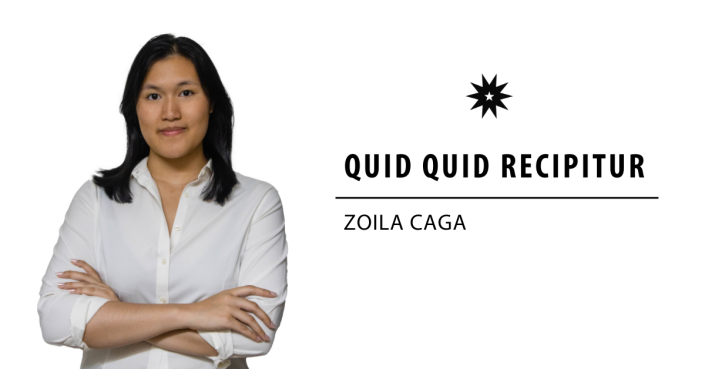As I said goodbye to the Editorial Board, I realized that I somewhat forgot what it meant to lead. If there is anything that service should teach you, it is to believe in something bigger than yourself and to live it. Leaving a position that I held onto so tightly did not seem to align with that. I spent my last weekend as Associate Editor in the classic-never-ending routine: busy. In my last two days, we dedicated our time to covering the 38th EDSA People Power anniversary, graduation ceremonies at PICC, and of course seven UAAP games, all with some backlogs being finished in between.
Almost two years ago in UAAP Season 84, our photographers geared up their dexterous skills to practice “Ctrl + PrtScn” or “command, shift, 3,” processing on Remini, and speed editing the screenshots of game broadcasts on Photoshop. Thankfully, we only barely had to do that because the media eventually had the green light to cover face-to-face. The opportunity was exciting, but our skills were so juvenile. It was the kind you’d give an A for effort. It probably took me and my assistants the entire basketball season to redefine our standards, refine our skills, and build a system.
That was two years ago. Nowadays, we can push our newbies in the pool, and they will get good after two games.
Around this time last year, the publication was trying to find its footing in managing and balancing onsite operations. It took a lot of trial and error. I distinctly remember our University Editor debriefing our staffers after our team exhibited unprofessional behavior during our first big coverage since my appointment, EDSA 37 at the People Power Monument. It was the tough love the kids needed.
Meanwhile, our Sports Editor used to hard-carry every deliverable in one coverage for some time. It takes a level of skill and dedication to meet that, but it’s a tough job to do alone. When he started delegating work, his capabilities shone even more and he performed even better together with his team.
We have come a long way; when I saw how well we worked—with some hiccups—I was reminded, not of the innovation, but the process it took to get there. Peaceful resolution was a rare occasion, and working in a team wasn’t merely about effort but harmony. Our efforts were often discordant, but if anything drove us to harmony, it was our desire to do better.
Better meant something different every year. A fresh front of faces is challenged to rise to the occasion. Every year, we experience the same thing in a different form. And every year, the biggest testament to our success was not what we achieved but what we made from what we were given. Because oftentimes the legacies that are left are also the ones that need to be broken.
That isn’t the path people start with, or rather, even dare to do—what’s wrong with what we’ve got? Honestly, many. Kidding aside, it takes the kind of perception you only get from experience to realize that your shot was good, but it wasn’t enough. Because if there’s one thing you can never turn over, it’s your own mistake. Unless you repeat that process, it’s hard to say you did right by what you started when you never get the opportunity to do it again.
As a leader, your influence reigns quickly. What you start immediately becomes the model for the next generation. Yet as a leader, our influence takes off flimsy. We also start with the mistakes of those who came before us. If our predecessors never share the pasts of their legacies and the ascent from their mistakes, our learning curve becomes a cycle we can never break. What this teaches is not to blame our past but to never be complacent with what we have.
Capping all in a day’s work was the combination of past pioneers and deconstructed developments. If our board today never built nor broke what their predecessors began, we would not have accomplished as well as we did. Because the previous board cared the way they did and shared the mistakes they made, today’s board has become what The LaSallian’s 62nd Editorial Board wanted to be—never left behind. For 62, there was much to live up to but little to work with. They carried steel like feathers and fought for something so great they broke a cycle their successors did not need to mend. I don’t think we get enough credit for the things we break.
It takes perception (lots of frustration) to realize that something good isn’t serving you anymore. It takes courage to accept that and let it go, despite all its good. The weight of correcting baggage we didn’t make is a duty that leaves much to grieve from the past with nothing to make sense of in the present. During those last two days I remembered that while my hand will no longer be behind the achievements of this publication, my efforts rest beneath their success. I have fought for no one but The LaSallian. Now that I have shared my fight, it is my time to rest. As my merits sit in silence, my legacy waits to be overturned.

